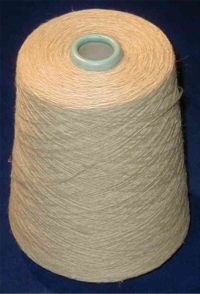How does Hemp fair environmentally and socially as a material?
Hemp (Cannabis sativa) has a lot of good environmental criteria
- it is fast growing and smothers out other plants (including weeds) therefore not requiring any application of herbicide.
- it appears to grow better in an organic system than in a conventional one
- it grows well in cooler climates and little or no irrigation is required.
- It grows to between one and four metres tall and yields around 6 tonnes per hectare and 20- 30% of the plant is fibre.
- Hemp has far higher fibre yields than other natural fibres.
(Source: Kate Fletcher, 1999 www.demi.org.uk)

What can it be used for?
Property-wise hemp fibres are similar to flax or (linen) although slightly coarser and stronger. Hemp is suitable for a number of textile applications (as well as other applications including paper, building materials and composites) and particularly furnishing fabrics and 'bottom weight' clothing. It is frequently blended with other fibres such as cotton, silk or synthetics. Hemp is a realistic substitute for both cotton and linen. (Source: Kate Fletcher, 1999)
Hemp Canvas, Hemp linens, Hemp knits, Hemp stretch, Hemp blends and Hemp speciality knits are also now available - for more information visit: www.hemptraders.com